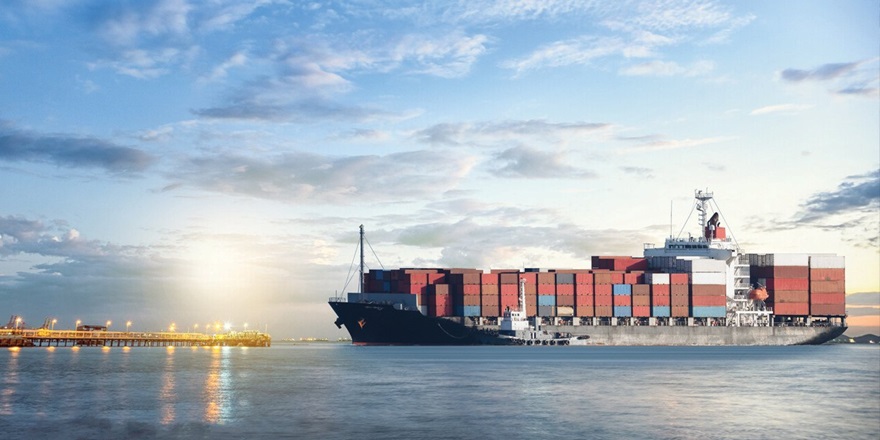The lifespan of a container ship can vary based on several factors such as maintenance, technological advancements, and operational demands. Typically, container ships are built to have a service life ranging from 20 to 30 years, but some vessels can operate for longer periods with proper maintenance and refurbishment.(1)
When a vessel reaches the end of her useful life, it undergoes a process called ship recycling or ship scrapping. This involves dismantling the ship to recover materials such as steel, iron, aluminum, and plastics, which can be recycled and used to create new products. The process begins with the ship being beached on the coast in large ship-breaking yards, like Aliaga in Türkiye or Alang in India.
The ship is then stripped of its machinery and other valuable components that can be reused or sold. The remaining structure is broken down into pieces, and the materials are processed for recycling. This method is not only economical but also environmentally beneficial as it reduces the need for new raw materials and energy consumption in steel production.(2
In some cases, ships may be sunk to create artificial reefs after removing hazardous materials, or they may be repurposed as floating hotels or museums. However, the most common fate for retired ships is to be scrapped in ship-breaking yards.

Looking for alternative revenue streams, to counter the global decrease in container shipping demand, carriers have been looking at investing in the car and truck market. The container shipping sector, by contrast, is under pressure to respond to a huge injection of capacity introduced “in almost the blink of an eye”. Because of that capacity enterence, available space now is running ahead of demand, which is reducing vessel utilization and depressing freight rates.
What are the advantaged / disadvantages for “Owning Older Ships”?
There are some advantages for shipping lines using older vessels, although these advantages need to be balanced against potential drawbacks.
Owning older ships can have both advantages and disadvantages. Here’s a summary of the key points: (3)
Advantages:
• Cost Savings: Older ships can be more cost-effective to operate and maintain compared to newer vessels.
• Versatility: Older vessels might be more versatile and suitable for certain routes or cargo that do not require the latest technology or high speeds. They can be employed in less demanding trade lanes or niche markets where the demand for shipping services might not necessitate the use of newer, more advanced vessels.
• Unique Features: Older ships may offer unique features that are not found on newer ships, such as grand dining rooms and a sense of tradition.
• Incorporation of New Features: During refurbishments, older ships can incorporate new features, enhancing the onboard experience.
Disadvantages:
• Maintenance Costs: Older ships may require more frequent and costly maintenance due to wear and tear.
• Modern Amenities: They may lack modern amenities and technology found in newer ships.
• Environmental Regulations: Older ships might not meet current environmental regulations, leading to potential fines or restrictions.
• Safety Concerns: There could be safety concerns due to outdated design or equipment. It’s important to weigh these factors carefully when considering the ownership of an older ship. Each situation will have its own set of circumstances that could influence the decision.
Ultimately, while older vessels might offer initial cost advantages, shipping lines need to carefully consider the trade-offs between cost savings and potential higher operating expenses and regulatory compliance issues when using older ships in their fleets.
If a ship were to be considered as a human, the average age of a ship in the world merchant fleet would be over 20 years around 28 years (4). This is similar to the average age of a young adult. However, it’s important to note that ships, unlike humans, do not age biologically but rather through wear and tear from use and the marine environment. The concept of a ship having an “average age” is more about the typical lifespan and service period of vessels in the fleet.
Of course, the following points should be taken into consideration in order to extend the life of the ship.
Quality Materials: The use of high-quality materials in both construction and repairs is crucial. This approach ensures greater durability and resilience against harsh marine conditions.
Operational Best Practices: Efficient operational practices, including the use of modern navigation systems and balanced cargo-loading techniques, are fundamental. These practices not only prolong the ship's life but also enhance safety and efficiency.
A ship’s construction materials will eventually be recycled in large part. Materials can be reused, including those the company or ship owner removes in the early days before a ship is retired and the last hull plates at the ship breaking yard. Metals will be further purified and melted down to create new hull plates and other materials that may eventually be used to construct larger, more advanced ships.
In contrast, sentimental and commemorative things may continue, especially in cruise company offices. Salvaged items may be displayed aboard newer ships or as souvenirs in museums or private collections. Many other materials also find other industrial uses. Depending on the ship’s size and the scrapyard’s work schedule, scrapping a vessel could take just a few weeks, several months, or even years until the last traces of the hull finally disappear.
During the route, many individuals are engaged, and for those with close ties to a vessel, it may be an emotional voyage. But the scrapped ship will ultimately continue to exist in the memories and hearts of the hundreds of millions of people who sailed on her, not just in the recycled or reused items or souvenirs.
Wishing Calms Seas All the Mariners.
Sources:
(1) PFE Express Ltd
(2) 2024 Martide Pte. Ltd Seatrade Maritime News
(3) https://maritime-union.org/
(4) World merchant fleet - age by vessel type 2022 | Statista

